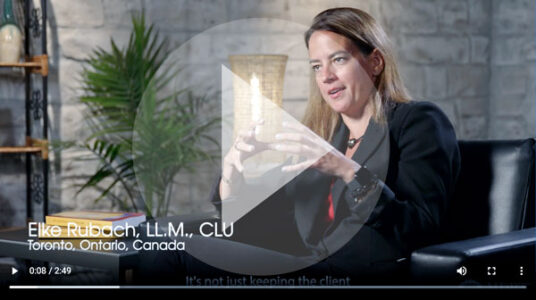Being a multigenerational financial advisor has multiple advantages for advisors and their clients.
For the financial advisor, you become the go-to person for clients and their families. You’re like their human resources person and chief financial officer for many aspects of your clients’ lives. You’re indispensable. For you, this can provide a steady stream of new clients, and you won’t be part of the statistic where 70% of widows leave their advisor after their spouse dies.
For clients, your financial plan wraps around them like a hug as you take care of them and their families. Furthermore, you provide peace of mind for clients because they know their loved ones are also being taken care of.
Often for our clients, the goal of our financial plans isn’t the money. Money is simply a tool. It’s more about the client’s values of creating harmony in the family, being independent and providing for loved ones. So, to plan for the entire family, I delve in and find out what those deeper values are for my clients and the legacy they wish to leave.
Talking to the family
To be a multigenerational financial advisor, you must have conversations with the whole family, even before they become your clients.
I start talking to my clients’ children as early as possible, even if they’re young. It’s not to pitch to them but to get to know them. Ideally, we can help them learn how to handle money well, for example, when they’re off to college and how to responsibly use credit cards. You’re making sure they’re financially literate without necessarily letting them know you’re teaching them that.
I’ve been in this business for 10 years, and I’ve had clients who were 13 or 14 years old when I started and first met them. Now they’re 23 or 24 years old, and I see their careers booming. They now know the value of a financial advisor and that I’m their parents’ go-to person. When they’re ready to begin their own financial planning, I’m there for them.
Many of our clients have told me that their parents, who are in their 80s or 90s, have not planned financially and refuse to talk to family about it. We can have that conversation with them. We can talk with them at their pace and in ways where they can feel comfortable. We let them know about the implications of not talking to their kids because the kids might be assuming things. Sometimes all the conversations that were not had are exactly the ones that can destroy a family.

Watch more from Elke Rubach in her video, “Want to be indispensable? Create multi-generational financial plans.”
Long-term results and commitment
Multigenerational planning takes time because you’re going deep with the family. It’s not something you can do when you have 2,000 clients. Instead, it’s about patience, process and being curious about the family. You ask them all questions and bring everyone into the conversation.
Despite our best efforts, there are times when not all our clients’ children will become our clients. And that’s fine. It’s OK to not take everyone as a client. At least we’re setting them up for future success, and whenever they find an advisor who they match with, we wish them the best. I’ve learned that, if their values and my values aren’t aligned, it’s a waste of time and energy working with them.
Elke Rubach, of Toronto, Ontario, Canada, has been an MDRT member since 2018.






Similar Posts
Questions you should be asking every client
How to harness the power of reciprocity with COIs
Overcoming 4 common reasons why people don’t buy insurance